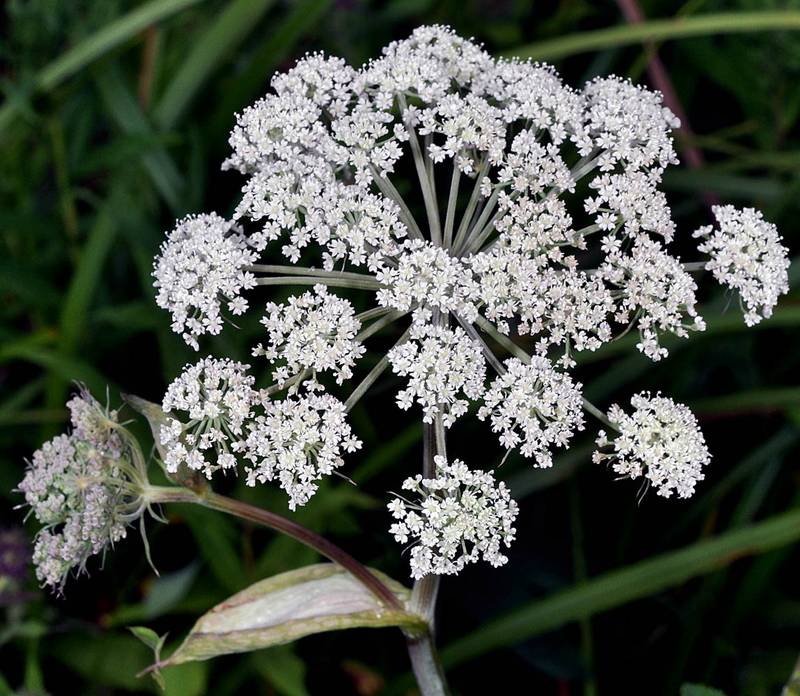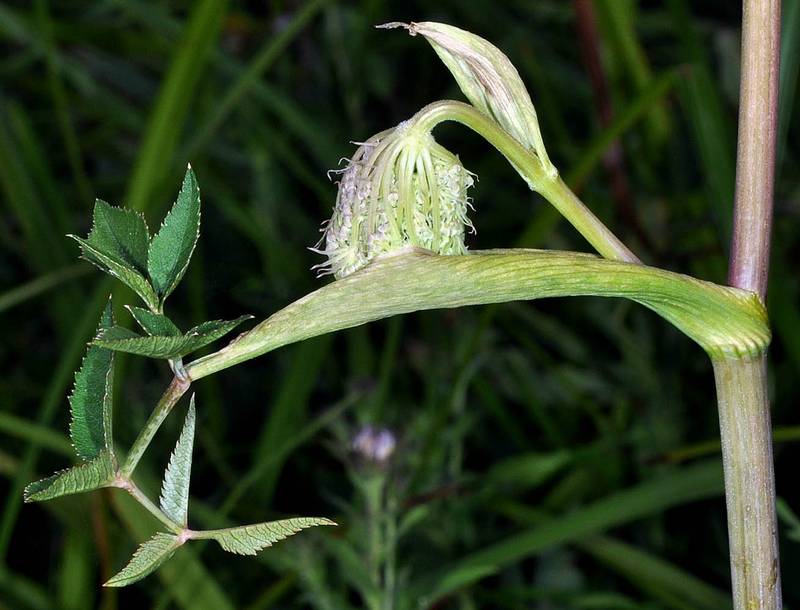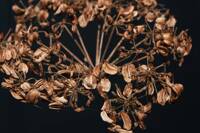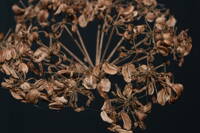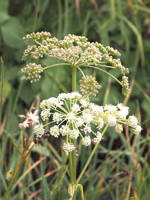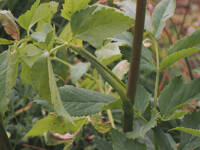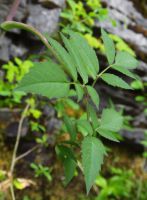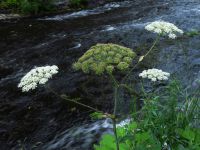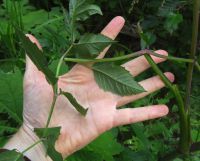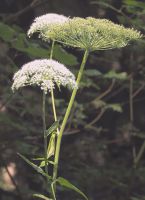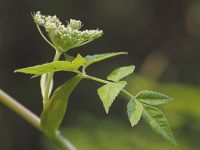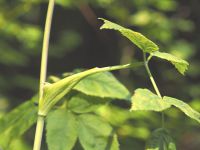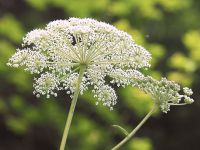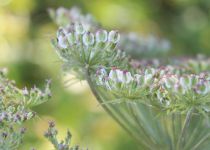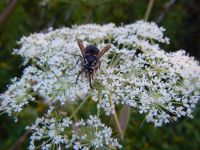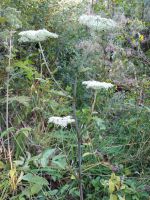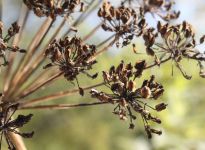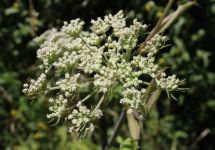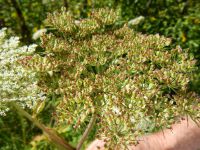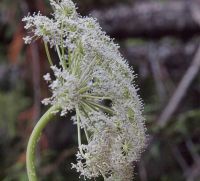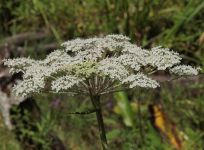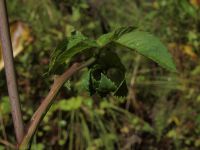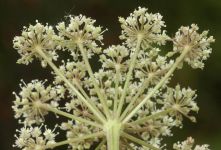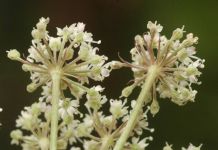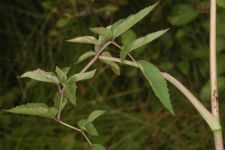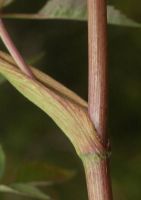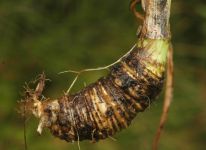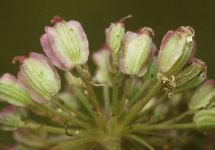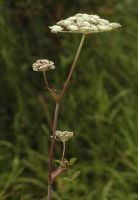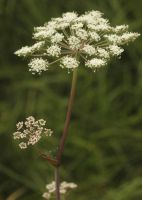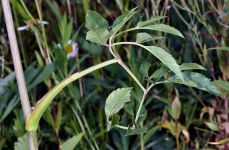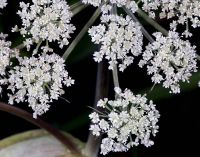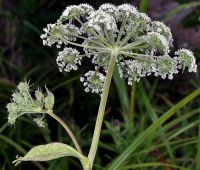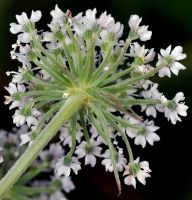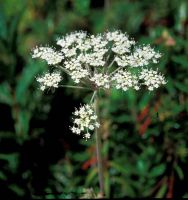Distribution: Occurring chiefly west of the Cascades crest and east in the Columbia River Gorge in Washington; Alaska to California, east in British Columbia to the Selkirk Mountains.
Habitat: Stream banks, wet meadows and other moist places, from low to middle elevations in the mountains.
Flowers: July-September
Origin: Native
Growth Duration: Perennial
Conservation Status: Not of concern
Pollination: Bees, beetles
Stout, leafy-stemmed perennial from an erect, simple crown, often 1 m. or more tall, the stem glaucous.
Leaves ternately-pinnately twice compound, bending downward, the base of the petiole sheathing; leaflets ovate to lanceolate, serrate, 4-10 cm. long and 1.5-5 cm. wide, glabrous except for the veins beneath.
Compound umbels several, rays 22-45, unequal, up to 7 cm. long; involucre wanting; involucels of well-developed, narrow bractlets; calyx obsolete; petals 5, glabrous, white or pinkish.
Ovary inferior, 2-celled, glabrous, the stylopodium broadly conic; fruit broadly sub-orbicular, 3-4 mm. long and wide, with narrowly-winged dorsal ribs and lateral wings nearly as wide as the body.
Publication: Fl. N. Amer. (Torr. & A. Gray) 1(4): 620. 1840.
PNW Herbaria: Specimen records of Angelica genuflexa in the Consortium of Pacific Northwest Herbaria database
WA Flora Checklist: Angelica genuflexa checklist entry
OregonFlora: Angelica genuflexa information
E-Flora BC: Angelica genuflexa atlas page
CalPhotos: Angelica genuflexa photos

